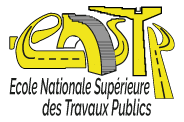This course addresses the techniques and tools of modeling used to analyze and forecast transportation systems. It covers mathematical and computational models that allow for the simulation of transport flow behavior, the assessment of transportation policy impacts, and the optimization of infrastructure planning. The main methods discussed include transport demand models, modal split models, and road traffic models. The course also emphasizes the integration of social, economic, and environmental aspects into models for more accurate and sustainable planning. Practical examples and case studies are used to illustrate the application of these models in rea
The course addresses the fundamental concepts of supply chain management, including the planning, organization, and control of the flows of materials, information, and capital. It presents various mathematical modeling techniques to optimize key processes in the supply chain, such as production, storage, transportation, and distribution. The emphasis is placed on the use of decision-support tools such as linear programming, simulation, and optimization algorithms to solve complex planning and management problems within the supply chain. The course also studies strategies for integration and collaboration among the various actors in the supply chain to improve the overall performance of the system. Case studies and concrete examples allow students to apply theoretical concepts to real situations and develop their analytical and decision-making skills in a supply chain context.
The course addresses the fundamental concepts of supply chain management, including the planning, organization, and control of the flow of materials, information, and capital. It presents various mathematical modeling techniques to optimize key processes of the supply chain, such as production, storage, transportation, and distribution. Emphasis is placed on the use of decision support tools like linear programming, simulation, and optimization algorithms to solve complex planning and management problems within the supply chain. The course also studies strategies for integration and collaboration among the various actors in the supply chain to improve the overall performance of the system. Case studies and concrete examples allow students to apply theoretical concepts to real situations and develop their analytical and decision-making skills in a supply chain context.
This course explores the economic principles applied to the transport sector, examining how transport decisions influence and are influenced by economic dynamics. It covers basic concepts such as transport supply and demand, production costs, economies of scale, and pricing of transport services. The course also addresses the economic impacts of transport infrastructure, externalities (both positive and negative), and public policies aimed at regulating or encouraging the development of transport systems. Case studies and practical examples illustrate how transport economics contributes to strategic planning and sustainable development of territories.
This course focuses on the tools and methods used to analyze and economically evaluate transport projects. It examines how projects are assessed in terms of profitability, costs, and long-term economic benefits. The course covers techniques such as cost-benefit analysis, sensitivity analysis, and financing models to determine the economic viability of projects. It also addresses financial aspects, such as public-private financing, and indirect economic impacts, such as effects on employment and regional economic growth. Case studies are often used to illustrate the practical application of these concepts in real-world contexts.
This course explores the analysis methods used to evaluate the socio-economic and environmental impacts of transport projects. It emphasizes the importance of considering both direct and indirect effects of these projects on communities, the local economy, and the environment. Cost-benefit analysis, externality assessment, and multi-criteria analysis techniques are studied to measure the viability and sustainability of projects. The course also addresses approaches to minimize negative impacts while maximizing social and economic benefits, drawing on real case studies and practical examples.
